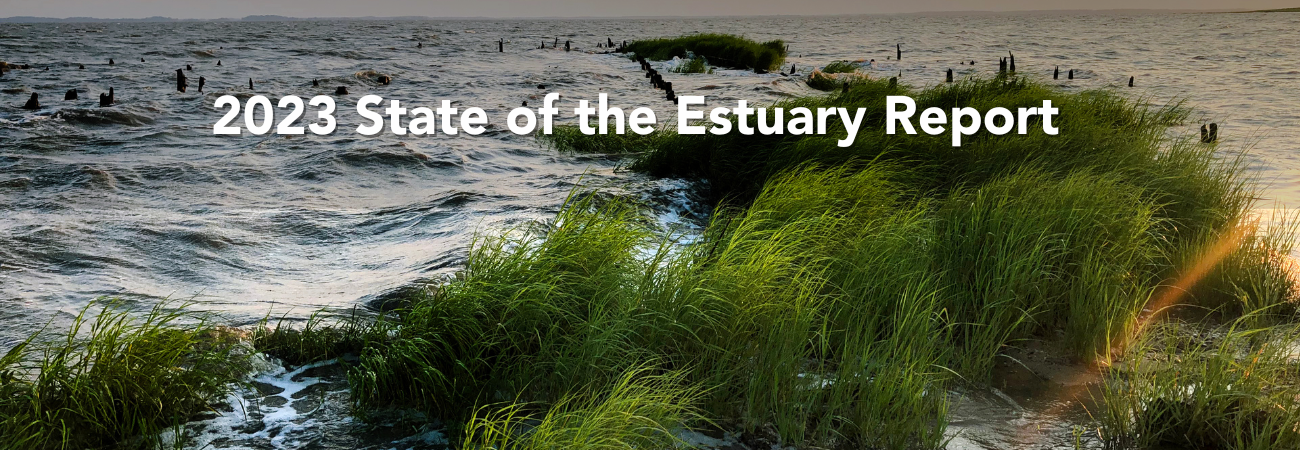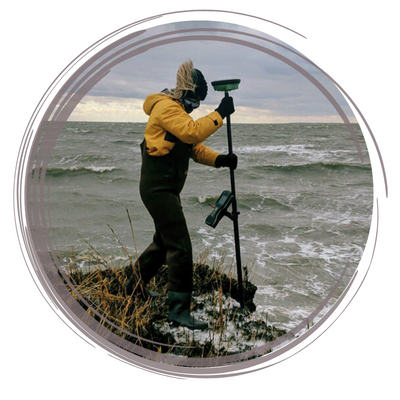
Nestled in the vibrant landscape of the northeastern United States, the Delaware River Watershed stands as a thriving resource for communities and wildlife alike. This water-rich haven supplies over 6 billion gallons of freshwater daily for drinking, agriculture, and industry and is home to over 8 million people. The Delaware River Watershed stretches across 42 counties in four states (Delaware, Pennsylvania, New Jersey, and New York), extending over 13,500 square miles.
The Delaware Estuary encompasses roughly the lower half of the Delaware River Watershed, where the freshwater of the Delaware River and the tributaries that drain to it mi x with the saltwater of the Atlantic Ocean. This mixing creates a rich array of habitats, and the Delaware Estuary boasts a remarkable diversity of mammals, birds, fish, and plants. Beyond its environmental significance, the Delaware Estuary is a driver of local industries, sustaining livelihoods and bolstering our robust economy to the tune of over $10 billion each year. Our intricate bond with this ecosystem underscores the profound impacts any decline in its health would have on our daily lives.
x with the saltwater of the Atlantic Ocean. This mixing creates a rich array of habitats, and the Delaware Estuary boasts a remarkable diversity of mammals, birds, fish, and plants. Beyond its environmental significance, the Delaware Estuary is a driver of local industries, sustaining livelihoods and bolstering our robust economy to the tune of over $10 billion each year. Our intricate bond with this ecosystem underscores the profound impacts any decline in its health would have on our daily lives.


What’s Our Health Status?
The Delaware River and Watershed are in “fair” condition and have been since our 2012 Technical Report for the Delaware Estuary and Basin was published. This fair rating is notable in a time of overwhelming forces of environmental change. Despite growing impacts on our natural resources stemming from population growth, development pressure, and climate change, it reflects significant habitat protection and restoration efforts.
What Does Fair Mean?
The “fair” rating is a composite — the result of comparing various indicators, from water quality to fish and wildlife abundance, to assess the watershed’s overall health. Some factors are getting better or holding steady, while others are getting worse. Put all these things together, and the overall result is “fair.”
INDICATORS

Want to help the Delaware Estuary but don’t know where to start? There are easy steps you can take to improve the health of our region’s waterways. These steps might seem small, but the cumulative effect could be enormous.
• Put trash in a trash can. Litter on the ground and around storm drains washes into our waterways.
• Pick up your dog’s waste off the street and in your yard. Like litter, stormwater carries pet waste into our waterways and pollutes them.
• Participate in local drug take-back programs or obtain drug disposal packets at the pharmacy instead of flushing prescription drugs down the toilet.
• Put food grease and oil in a separate container for trash disposal instead of pouring it down the drain.
There are similar sections under each indicator that give you tips on what you can do to make the Delaware Estuary and Watershed better. Read the tips and follow up with your actions.

What is the State of the Estuary Report?
This State of the Estuary report is a condensed, user-friendly companion to the 2022 Technical Report for the Delaware Estuary and Basin (TREB), created every five years to provide a check-up on the health of the Delaware River Watershed. The State of the Estuary report focuses on 14 out of the 60 indicators evaluated in the TREB. These indicators provide a point of reference for how we paint the picture of ecosystem health and offer benchmarks for measuring the success of the Delaware Estuary Program’s Comprehensive Conservation & Management Plan, a roadmap of the goals and strategies employed by PDE and its partners to improve the estuary’s health. Furthermore, the indicators offer insights into the trajectory of environmental conditions, thereby helping us understand if the overall health of the Delaware Estuary is getting better or worse. Each section of the State of the Estuary includes a review of each indicator, its current ranking, and links for more information and actions to make a difference.


How We Created This Report
As host of the Delaware Estuary Program, one of 28 National Estuary Programs in the United States, the Partnership for the Delaware Estuary (PDE) and its partners are dedicated to protecting and enhancing the Delaware River and Bay, by focusing their work around the themes of clean waters, healthy habitats, and strong communities.
The State of the Estuary Report is based on the TREB, which is founded upon sound, scientifically rigorous data collected by regional scientists and resource management experts who use a variety of environmental indicators to provide a check-up on the health of the Delaware River Watershed. To delve deeper into the scientific data and assessment methods, we encourage you to review the 2022 TREB.
Funding Support
This project has been funded wholly or in part by the United States Environmental Protection Agency under assistance agreement CE – 99398516 – 1 to the Partnership for the Delaware Estuary. The contents of this document do not necessarily reflect the views and policies of the Environmental Protection Agency, nor does the EPA endorse trade names or recommend the use of commercial products mentioned in this document.




